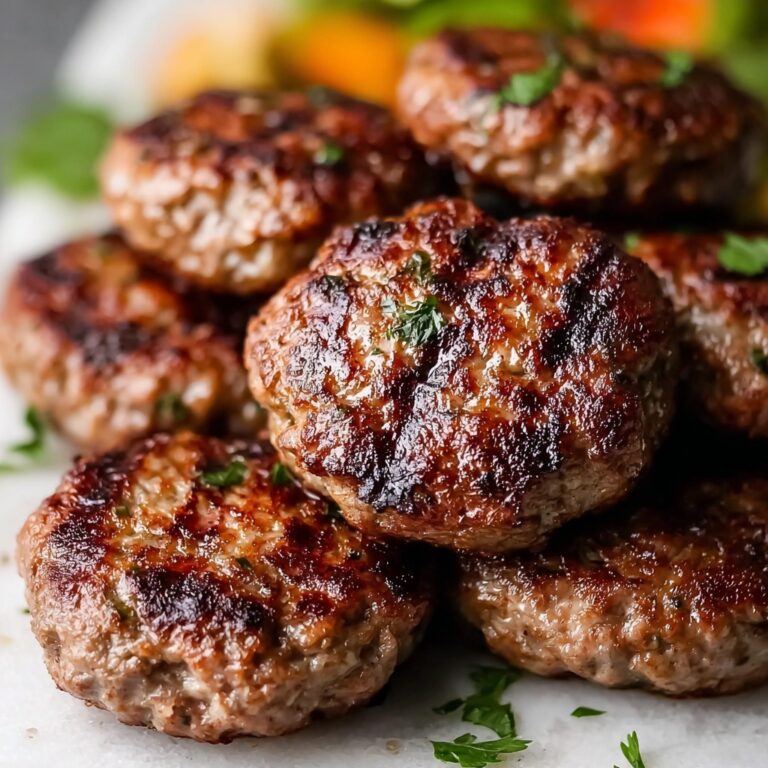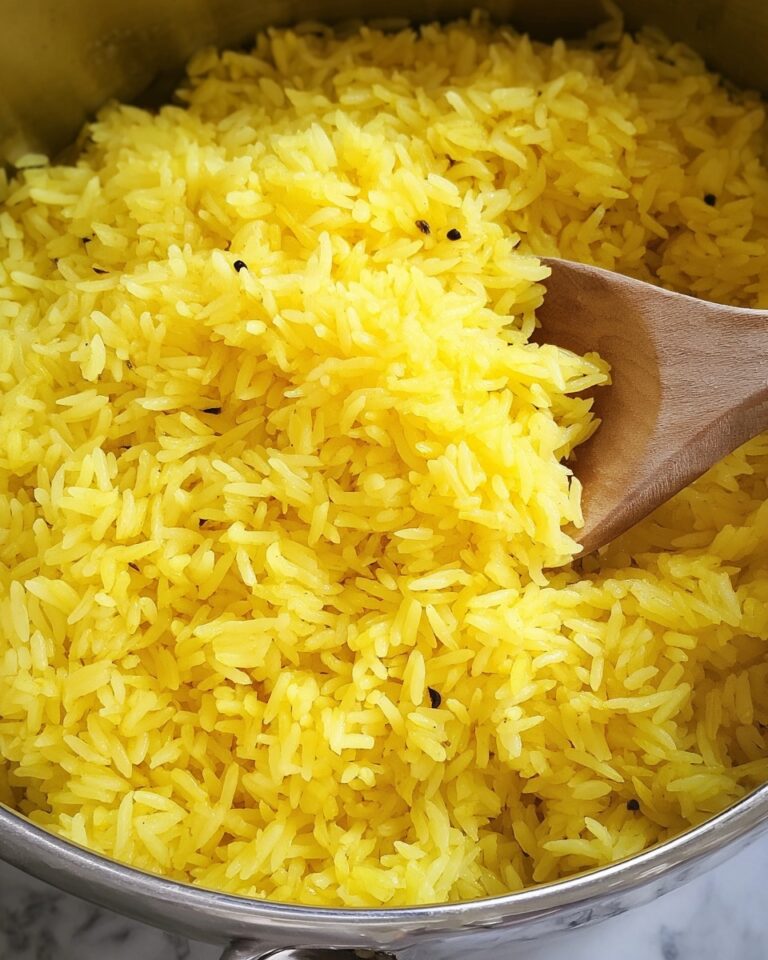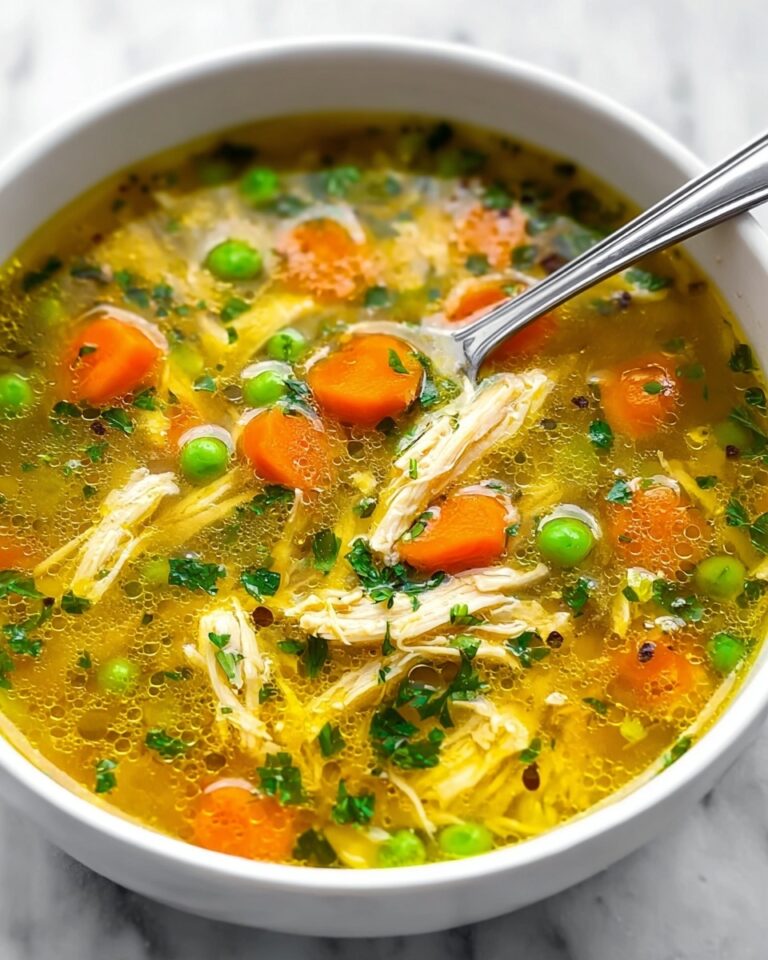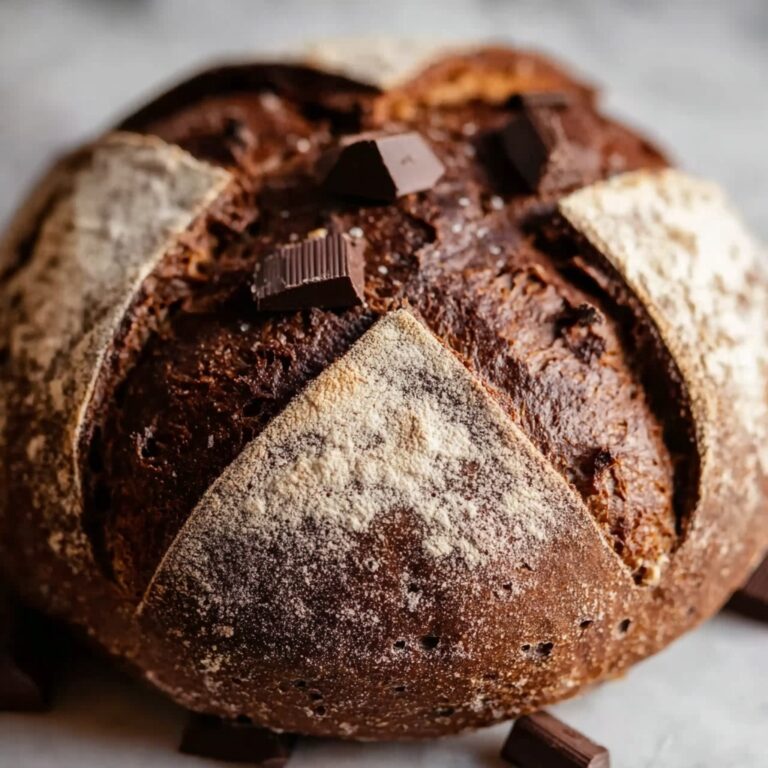If you’re craving a sweet treat that feels like a warm hug from Greece, look no further than Bougatsa: A Delightful Greek Custard Pastry Recipe. This luscious dessert wraps a creamy, fragrant semolina custard in layers of buttery, crispy phyllo dough, creating a beautiful balance of silky and crunchy textures. The subtle notes of lemon zest and vanilla make every bite irresistible, inviting you to experience an authentic taste of Greek comfort food that’s both simple and elegant. Whether you’re sharing this with family or indulging during a quiet moment, bougatsa promises pure joy on a plate.

Ingredients You’ll Need
Getting ready to make this stunning pastry? The beauty of Bougatsa: A Delightful Greek Custard Pastry Recipe lies in its simple yet essential ingredients, each bringing something unique—whether it’s the richness of eggs, the creaminess of milk, or the flaky magic of phyllo. These components come together to create a symphony of flavors and textures.
- 4 large eggs, at room temperature: Eggs provide structure and a silky texture to the custard.
- 2/3 cup white sugar: Adds just the right amount of sweetness without overpowering the custard.
- 3 cups whole milk: Whole milk enriches the custard with creaminess and body.
- 1/2 cup semolina flour: This gives the custard a smooth, slightly grainy texture and helps it set perfectly.
- 1 cup cold unsalted butter, cubed: Adds richness and an emulsifying creaminess once melted into the custard.
- 2 tablespoons packed grated lemon zest: Offers a refreshing citrus aroma that brightens the custard.
- 2 tablespoons freshly squeezed lemon juice: Lends a subtle tang that balances the sweetness beautifully.
- 1 1/2 teaspoons vanilla extract: Infuses a warm, comforting note that rounds out the flavor.
- 3/4 cup unsalted butter, divided: Used to brush each phyllo sheet, ensuring layers crisp to golden perfection.
- 18 (14×9-inch) frozen phyllo pastry sheets, thawed: These delicate sheets create the signature crisp layers of the dish.
- 2 teaspoons confectioner’s sugar: For that finishing dust of sweetness.
- 1/8 teaspoon ground cinnamon: Adds subtle warmth and a classic touch when dusted on top.
How to Make Bougatsa: A Delightful Greek Custard Pastry Recipe
Step 1: Preheat and Prepare Your Oven
Start by setting your oven to 350°F (175°C). This ensures it reaches the perfect temperature for baking the bougatsa to a golden, crispy finish while the custard sets inside without drying out.
Step 2: Whisk the Eggs and Sugar
Using a stand mixer fitted with a whisk attachment, beat the eggs on medium speed until they turn foamy in about one minute. Then gradually add the white sugar and continue beating until the mixture thickens and becomes fluffy—this step is key for that airy custard base.
Step 3: Heat and Incorporate the Milk
Warm the whole milk in a saucepan over medium-low heat, stirring occasionally until it just begins to simmer. Carefully pour this hot milk into the egg mixture while the mixer runs at low speed—to gradually temper the eggs and avoid scrambling.
Step 4: Cook the Custard with Semolina
Transfer the combined mixture back to the saucepan and cook over medium-low heat, whisking constantly. Once it starts to thicken slightly, whisk in the semolina flour slowly. Continue cooking until the custard resembles a thick porridge, about 1 to 2 minutes.
Step 5: Enrich the Custard
Remove the saucepan from heat and whisk in the cold cubed butter, one tablespoon at a time. This emulsifies the custard and adds sumptuous richness. Stir in lemon zest, fresh lemon juice, and vanilla extract for that classic Greek tang and aromatic flourish. Let the custard stand at room temperature as you prepare the phyllo.
Step 6: Prepare the Phyllo Layers
Brush a 13×9-inch nonstick baking pan with a tablespoon of melted butter. Lay eight phyllo sheets in the pan, brushing each one lightly with melted butter to ensure a beautifully golden crust that’s wonderfully crisp.
Step 7: Build Your Bougatsa
Spread your luscious custard evenly over the phyllo layers. Top with two additional phyllo sheets, again brushed with butter and stretched to cover the pan’s edges, forming a neat package for the custard inside.
Step 8: Create the Decorative Pleats
Take the remaining eight phyllo sheets and brush each with butter, then fold accordion-style into 2-inch pleats. Arrange these pleated sheets crosswise over the top of your bougatsa, pleats facing up, creating a stunning textured surface.
Step 9: Bake to Glorious Perfection
Pop your assembled pastry into the oven and bake for 40 to 45 minutes until it’s deep golden brown and crispy to the touch. Remove from the oven and allow it to cool slightly—this resting period lets the custard firm up just right without losing softness.
Step 10: Finishing Touches Before Serving
Before slicing, dust the bougatsa evenly with confectioner’s sugar and a light sprinkle of cinnamon. This step is the hallmark of the authentic Greek pastry, adding sweetness and warmth that perfectly complements the filling.
How to Serve Bougatsa: A Delightful Greek Custard Pastry Recipe

Garnishes
Present your bougatsa with a sprinkle of powdered sugar and cinnamon, as tradition dictates. For a little extra flair, try adding a drizzle of honey or a dollop of whipped cream on the side—both enhance the creamy custard and balance the flaky pastry beautifully.
Side Dishes
Keep it simple alongside a cup of strong Greek coffee or a warm cup of chai tea. The robust bitterness of these drinks contrasts wonderfully with the sweet, buttery pastry and makes for a perfectly rounded experience.
Creative Ways to Present
Slice the bougatsa into neat squares or diamonds for a charming presentation at brunch or dessert gatherings. You can also serve smaller individual portions by cutting the pastry into tidbits and placing each on a pretty plate with a sprinkling of nuts or fresh berries for added color and texture.
Make Ahead and Storage
Storing Leftovers
Leftover bougatsa can be stored covered at room temperature for up to a day, but it’s best enjoyed fresh for ultimate crispness. For longer storage, place it in an airtight container and refrigerate for up to 3 days.
Freezing
To freeze, wrap individual portions tightly in plastic wrap and then foil to protect against freezer burn. Frozen bougatsa can be kept up to 1 month. Thaw overnight in the refrigerator before reheating.
Reheating
Reheat slices in a 350°F oven for 10–15 minutes until warmed through and the phyllo regains crunch. Avoid microwaving, as it can make the pastry soggy and lose that signature crispness that makes bougatsa so special.
FAQs
Can I use phyllo dough fresh instead of frozen?
Absolutely! Fresh phyllo can be used if available, but handle it carefully as it dries out quickly. Whether fresh or frozen, always keep the sheets covered with a damp towel during preparation to maintain their pliability.
Is semolina flour necessary in the custard?
Yes, semolina flour is key to achieving the custard’s classic texture and firmness. It thickens the custard and imparts a subtle graininess that’s essential for authentic bougatsa.
Can I make bougatsa without lemon zest and juice?
While technically possible, omitting lemon will result in a less vibrant flavor. The lemon adds brightness and balances the richness of the custard, making it more interesting and true to traditional Greek tastes.
How thin should the phyllo sheets be layered?
The phyllo sheets should be brushed lightly with melted butter and layered thinly to create alternating crispy layers. The key is a delicate touch so each sheet crisps up without becoming greasy or soggy.
Is bougatsa better served warm or at room temperature?
Bougatsa is delightful both warm and at room temperature, though many prefer it warm for that fresh-baked scent and the contrast of custard and crisp pastry. Serve according to your preference or the occasion.
Final Thoughts
I hope you feel inspired to try the enchanting Bougatsa: A Delightful Greek Custard Pastry Recipe in your own kitchen. This dish is truly a celebration of texture, flavor, and tradition coming together in a way that’s both comforting and impressive. Whether it becomes your next breakfast favorite or a show-stopping dessert, it promises smiles with every bite. Give it a go—you deserve a little slice of Greek happiness!
Print
Bougatsa: A Delightful Greek Custard Pastry Recipe
- Prep Time: 25 minutes
- Cook Time: 40 minutes
- Total Time: 1 hour 5 minutes
- Yield: 12 servings
- Category: Dessert
- Method: Baking
- Cuisine: Greek
Description
Bougatsa is a classic Greek pastry featuring layers of crispy phyllo dough filled with a creamy semolina custard, subtly flavored with lemon and vanilla. This delightful treat is perfect for breakfast or dessert and offers a harmonious blend of textures and fresh citrus aromas.
Ingredients
Custard
- 4 large eggs, at room temperature
- 2/3 cup white sugar
- 3 cups whole milk
- 1/2 cup semolina flour
- 1 cup cold unsalted butter, cubed
- 2 tablespoons packed grated lemon zest
- 2 tablespoons freshly squeezed lemon juice
- 1 1/2 teaspoons vanilla extract
Phyllo and Assembly
- 3/4 cup unsalted butter, divided (melted)
- 18 (14×9-inch) frozen phyllo pastry sheets, thawed
- 2 teaspoons confectioner’s sugar
- 1/8 teaspoon ground cinnamon
Instructions
- Preheat the Oven: Preheat your oven to 350°F (175°C) to ensure it reaches the right temperature while you prepare the custard and assemble the pastry.
- Prepare the Custard: Using a stand mixer with a whisk attachment, beat the eggs on medium speed until foamy, about 1 minute. Add sugar and continue beating until thick and foamy, approximately 4 to 5 minutes.
- Warm the Milk: In a large saucepan over medium-low heat, warm the milk until it starts to simmer, stirring occasionally to prevent scorching.
- Combine Milk with Eggs: With your mixer on low, slowly pour the hot milk into the egg mixture, blending fully for about 30 seconds to temper the eggs.
- Cook the Custard: Return this combined mixture to the saucepan and cook over medium-low heat, whisking constantly, until it simmers and thickens slightly, about 3 to 4 minutes.
- Thicken with Semolina: Gradually whisk in semolina flour, continuing to cook and stir until the custard thickens to a porridge-like texture, about 1 to 2 minutes.
- Finish the Custard: Remove from heat and whisk in cold butter cubes one tablespoon at a time until the mixture emulsifies, about 2 minutes. Stir in lemon zest, lemon juice, and vanilla extract. Let the custard cool at room temperature while preparing the phyllo.
- Prepare the Baking Pan: Brush a nonstick 13×9-inch baking pan with 1 tablespoon melted butter, covering the bottom and sides.
- Layer the Phyllo Base: Unfold phyllo sheets on a clean surface covered with a damp towel. Layer 8 sheets into the baking pan, brushing each sheet lightly with melted butter to ensure flakiness and prevent drying.
- Add the Custard: Spread the cooled custard evenly over the layered phyllo sheets in the pan.
- Top Layer of Phyllo: Place 2 more phyllo sheets on top of the custard, brushing each with melted butter and stretching them slightly to cover the pan sides.
- Create Accordion Strips: Take the remaining 8 phyllo sheets, brushing each with melted butter. Fold each sheet accordion-style to form 2-inch wide pleated strips. Arrange these strips crosswise over the top of the pastry with pleats facing up until the surface is fully covered.
- Bake: Bake in the preheated oven for 40 to 45 minutes, or until the pastry is golden brown and crisp.
- Cool and Garnish: Remove from oven and allow to cool slightly at room temperature for about 30 minutes. Dust evenly with confectioner’s sugar and cinnamon before slicing.
- Serve: Cut into squares and serve warm or at room temperature to enjoy the creamy custard and crispy phyllo layers.
Notes
- Ensure phyllo sheets are kept covered with a damp towel to prevent them from drying out while assembling.
- Use cold butter for emulsifying into the custard for a smooth, rich texture.
- Serve bougatsa fresh for the best balance of crispness and creaminess.
- Leftovers can be refrigerated and gently reheated in the oven to maintain crispness.
- Adjust lemon zest and juice slightly to taste if you prefer more or less citrus flavor.








